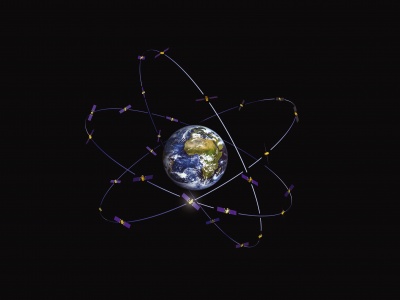If you wish to contribute or participate in the discussions about articles you are invited to contact the Editor
Galileo Space Segment
| GALILEO | |
|---|---|
| Title | Galileo Space Segment |
| Author(s) | GMV |
| Level | Basic |
| Year of Publication | 2011 |
The Galileo space segment will comprise 30 satellites in a Walker constellation with three orbital planes at 56° nominal inclination. Each plane will contain nine operational satellites, equally spaced, 40° apart, plus one spare satellite to replace any of the operational satellites in case of failures. The orbit altitude of 23 222 km results in a repeat a constellation repeat cycle of ten days during which each satellite has completed seventeen revolutions.
Constellation features
The altitude of the satellites has been chosen to avoid gravitational resonances so that, after initial orbit optimisation, station-keeping manoeuvres will not be needed during the lifetime of a satellite. The altitude chosen also ensures a high visibility of the satellites.
The position constraints for individual satellites are set by the need to maintain a uniform constellation, for which it is specified that each satellite should be within +/- 2° of its nominal position relative to the adjacent satellites in the same orbit plane and should be within 2° of the orbit plane.
The in-plane accuracy is equivalent to a relative tolerance of over 1000 km but requires very careful adjustment of the satellite velocity to ensure that the orbit period of all the satellites is kept precisely the same. The across-track tolerance allows the inclination and RAAN of each satellite to be biased at launch so that natural drifts remain within the tolerance without the need for orbit plane changes requiring major expense of fuel.
The spare satellite in each orbit plane ensures that in case of failure the constellation can be repaired quickly by moving the spare to replace the failed satellite. This could be done in a matter of days, rather than waiting for a new launch to be arranged which could take many months.
The satellites are designed to be compatible with a range of launchers providing multiple and dual launch capabilities.

